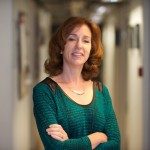Lien vers Pubmed [PMID] – 27718030
Ecohealth 2016 12;13(4):661-671
In the absence of direct evidence, an imagined “cut hunter” stands in for the index patient of pandemic HIV/AIDS. During the early years of colonial rule, this explanation goes, a hunter was cut or injured from hunting or butchering a chimpanzee infected with simian immunodeficiency virus, resulting in the first sustained human infection with the virus that would emerge as HIV-1M. We argue here that the “cut hunter” relies on a historical misunderstanding and ecological oversimplification of human-chimpanzee (Pan Troglodytes troglodytes) interactions that facilitated pathogenic transmission. This initial host shift cannot explain the beginnings of the HIV/AIDS pandemic. Instead, we must understand the processes by which the virus became transmissible, possibly between Sangha basin inhabitants and ultimately reached Kinshasa. A historical epidemiology of the late nineteenth and twentieth centuries, provides a much-needed corrective to the major shortcomings of the cut hunter. Based on 62 oral historical interviews conducted in southeastern Cameroon and archival research, we show that HIV emerged from ecological, economic, and socio-political transformations of the late nineteenth and twentieth centuries. The gradual imposition of colonial rule built on and reoriented ecologies and economies, and altered older patterns of mobility and sociality. Certain changes may have contributed to the initial viral host shift, but more importantly, facilitated the adaptation of HIV-1M to human-to-human transmission. Our evidence suggests that the most critical changes occurred after 1920. This argument has important implications for public health policy, underscoring recent work emphasizing alternative pathways for zoonotic spillovers into human beings.


